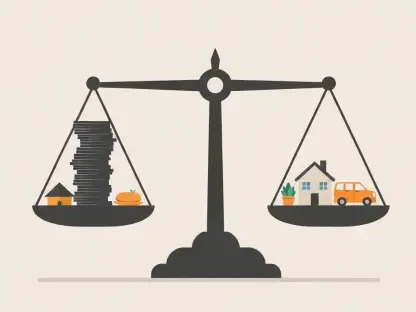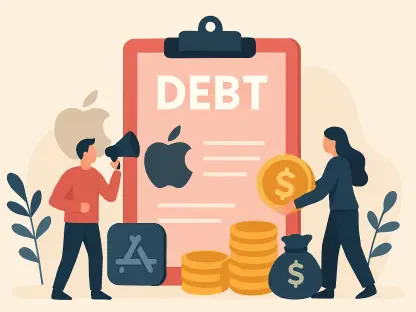Today’s banking industry is experiencing intense changes mainly due to increased technological advancements, customer needs, and new regulations. During the last decade, banks have explored non-branch models, and they have focused more on online banking strategies — trends that could become even more pronounced in the future.
When it comes to new trends, it is important to note that financial institutions will continue to concentrate on providing smooth, customized, and safe services. Revolutions in artificial intelligence (AI) and blockchain which will lead to open banking and financial inclusion are expected to redesign clients’ interactions with financial institutions in the next decade.
This article examines the most significant concepts that will define the future of banking and what this future looks like for banks, customers, and the financial system as a whole.
The Emergence of Neobanks and Digital-first Banking Services
Digital banking is the main type of banking people will be willing to accept in the future. This trend includes the growth of new branchless banks known as “neobanks”. They have achieved significant traction recently, providing clients with the necessary financial services based solely on the apps rather than on physical interaction. These new banks concentrate on ease, convenience, and affordability as they seek to offer banking services at lower costs than traditional banks.
Current examples of neobanks include Chime, Revolut and others, and most have gained millions of clients, especially from groups like the young Gen X and millennials. These new financial institutions have flexible and consumer-oriented business models, which include such offerings as account opening with just a few clicks, instant spending tracking, and budgeting apps. In the future, due to technological advancements, more and more of the traditional banks will mimic neobanks, offering better digital services or fully functional digital branches of their own.
Also, with smartphones now becoming better and better, they will probably define the future of the mobile banking industry too. Banks will probably improve their mobile apps and services, and find new tailored ways of serving their clients through their apps.
Using Artificial Intelligence (AI) and Machine Learning (ML)
Modern technologies such as AI and ML are predicted to disrupt the banking industry in numerous ways. Some of the potential benefits of using these technologies include automation of different operations, acquiring new ways of enhancing the customer experience as well as accessing better means of managing risks. For instance, AI-enabled chatbots are capable of offering round the clock customer support, while ML helps in detecting fraud transactions and recognizes money laundering. Moreover, AI technologies could be applied to offer better banking services by creating products and services based on clients’ preferences.
In the next few years, ‘autonomous finance’ services are also likely to appear. These are basically AI applications that operate the customers’ finances, savings, investments, and payments without human input.
From Using Blockchain Technologies to Decentralized Finance
The financial industry has been transformed by the use of blockchain technology and this change will only increase in the future. Blockchain has significant benefits in terms of security and efficiency, as it is distributed, virtually tamper-proof and also has a transparent nature. Therefore, it can help fulfill all the functions relating to transactions that are currently performed by clearinghouses and brokers.
Perhaps one of the areas that will benefit the most from using blockchain technologies is cross-border payments. Today, these are often processed over many days and incur relatively steep fees owing to the array of players in the middle. Blockchain with immediate, low-cost cross-border payments can add value to the efficiency of international trade and money transfers.
There is also Decentralized Finance (DeFi), an ecosystem based on blockchain technology and an alternative to the existing financial system. DeFi applications refer to technologies that enable borrowers to borrow, lenders to lend, and investors to invest without necessarily incorporating a bank into the process. This will expand financial services to everyone using the internet thus enhancing financial inclusion.
Improving Cybersecurity
Because banks have already started to rely more and more on new technologies, new cyber threats are also beginning to arise.
It is notable that maintaining customer’s data and avoiding cyber threats should be a primary concern for a great many financial organizations. It can be safely assumed that biometric control, encryption, and even AI-based system protection from cyber threats are going to be even more important when it comes to protecting data in the future.
Open Banking and the Rise of the Api Economy
Open banking or third-party access to financial data through application programming interfaces (APIs) is probably the shift that is going to revolutionize the industry the most through competition, innovation, and customer control. In open banking models, consumer permission can allow third-party providers of financial services to make use of their banking data for the purpose of providing more relevant personal financial services.
For instance, a third-party application could combine all of a user’s accounts from different banks in a single platform. It could then give targeted advice on one’s spending plan, recommend appropriate accounts for savings and credit, or assist with the automatic payment of bills. The rise of these third-party apps will put greater pressure on banks to enhance their own product portfolios to counter that of their new competitors — the fintech companies.
While consumer interfaces and apps will continue to represent the source of most new partnerships and businesses, the larger API economy will increase the level of interaction between traditional banks and fintech companies. Open banking will see more banks partnering with fintechs to offer additional services to their customers that can include payment, credit, and wealth management.
The Future of Banking – a Technological Revolution
The banking industry is facing big changes because of the numerous innovations recently made in the field of technology. Neobanks, AI, ML, and blockchain technologies, ongoing innovations in cybersecurity and open banking are disrupting traditional bank practices and services.
Startup neobanks now present flexible, digital-first products and services, whereas AI optimizes segments and customers’ experiences. Blockchain is shifting from cryptocurrencies into the entire financial industry.
It is important to highlight the matter of cybersecurity, as it will become harder to ensure that customers’ information is secure. Meanwhile, open banking is leading to the advanced growth now possible through the API economy. Industry dynamics suggest that the institutions that are capable of analyzing these trends and deploying technology to add value for consumers will be better placed on the market in the future.









